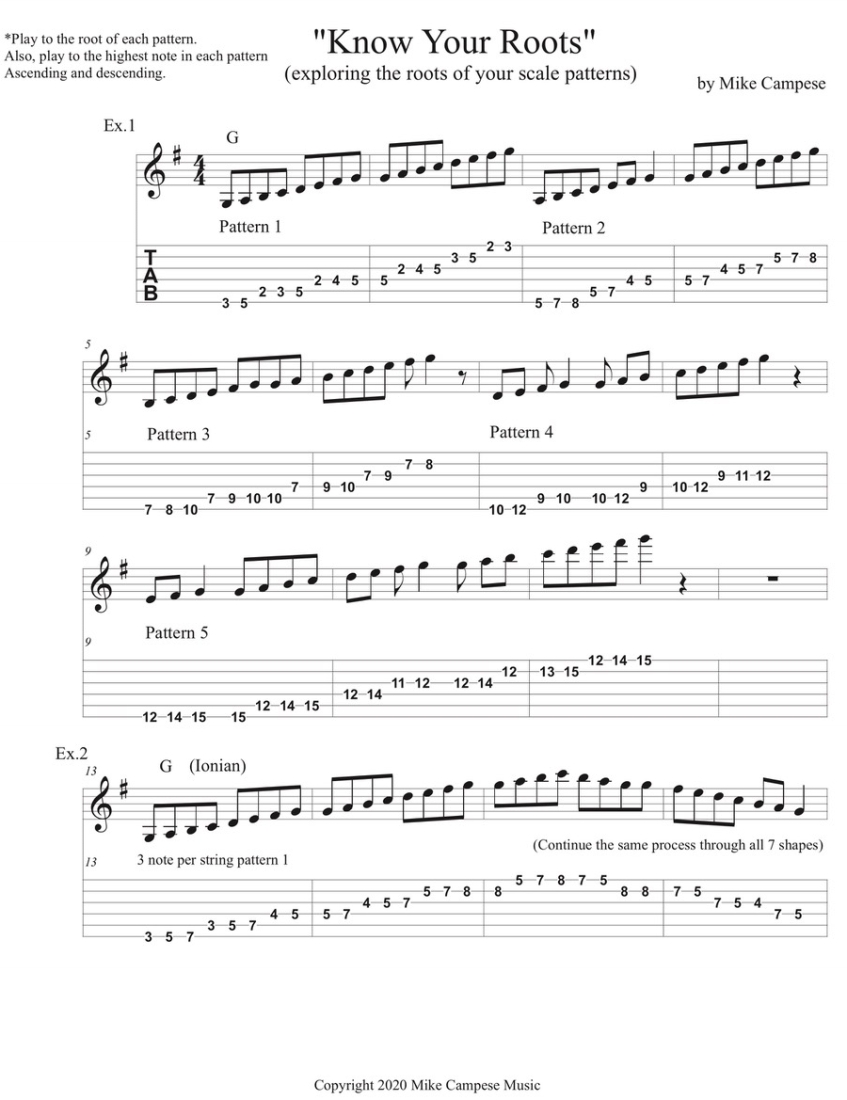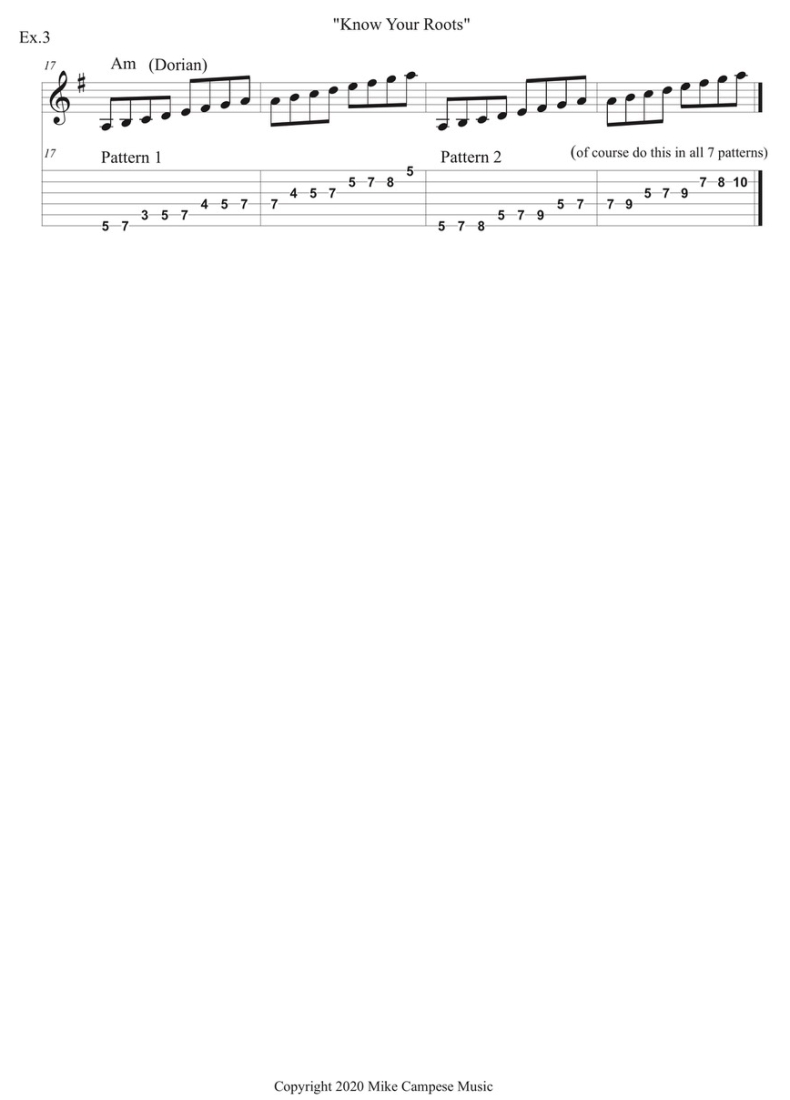Welcome back! In this lesson I would like to talk about a very important way you should be learning and practicing your scales. You should know all the notes on the neck and the roots of all of your scale patterns. After teaching for a long time, people tend to overlook it and just run up and down the scale without knowing the notes.
There are many advantages to knowing the roots of your scales. It will help you transpose them to different keys and riffs, solos, etc. If you know where the scale is built from, it will help get the sound of the scale in your ears. This is especially good if you are working on your modes, to hear the sound of each mode over a tonal center. For example, if you are working on G Dorian, to hear the flavor of the mode, you have to have the root of the mode as a drone note, or chord vamping over the scale. You can build the intervals of each scale from the root and it is easier to find the intervals in reference to the root.
In this lesson, I just mapped out the roots in some common scales. It is up to you to take every scale that you know and memorize where the roots are.
Example 1 shows the 5 basic major scale patterns in the key of G. I normally write the scale out in boxes and just circle the root. Here I tabbed it out, demonstrating a way you can practice it. Be sure to go to the highest note in that position and go to the lowest note as well. Feel free to make up different ways that work for you, across the guitar, on each string, etc. This is just a way to practice your scales; in a real situation you are not going to play a solo this way.
MP3 - Know Your Roots - Example 1
Example 2 is a 3 note per string pattern in the G Ionian mode, which is just a major scale. Start at the root and play to all the roots in each of the 7 major scale patterns. If you don’t know the patterns, I have done lessons on them in the past that you can check out.
MP3 - Know Your Roots - Example 2
Finally, Example 3 introduces the A Dorian mode, (A, B, C, D, E, F#, G), played from A to A in pattern 1 and 2 of the major scale. But, since we are playing A to A, you'll hear the Dorian sound. You can vamp on an A minor chord to get the sound of the scale in your ears. I just gave you a couple of patterns so you can get the idea; make sure you learn where all the Dorian roots are in all 7 patterns. If you have trouble with the other patterns, I can do another lesson with all of them.
MP3 - Know Your Roots - Example 3


That is it for now! Be sure to make up your own examples and visit www.mikecampese.com for more information.
Mike Campese is an all-around music performer, session artist and teacher competent in many musical styles, electric and acoustic. He has studied at G.I.T. (Honors Graduate), and with Paul Gilbert, Norman Brown, Stanley Jordan, Scott Henderson and Keith Wyatt.